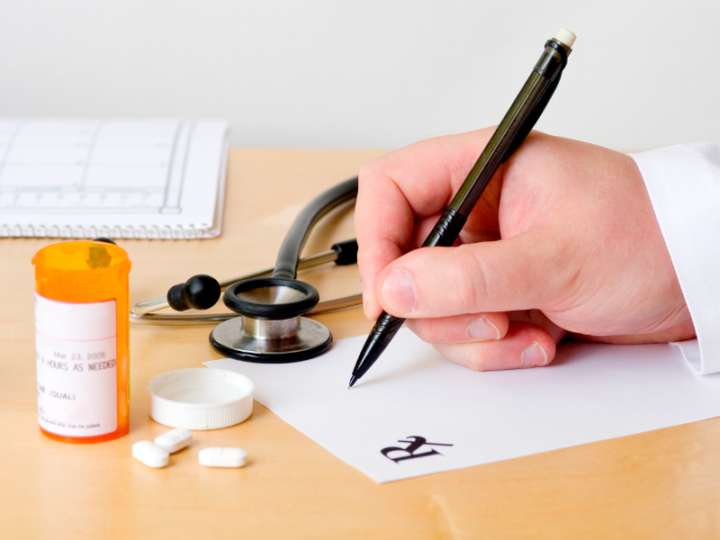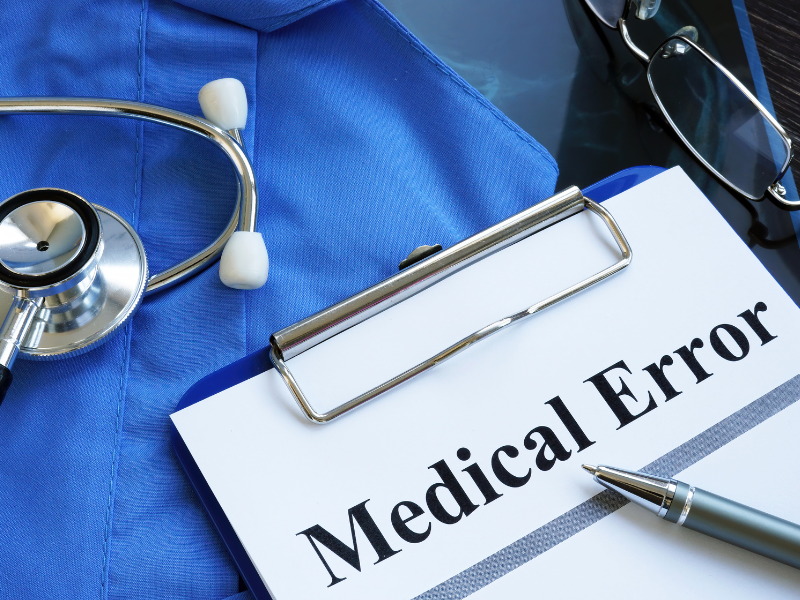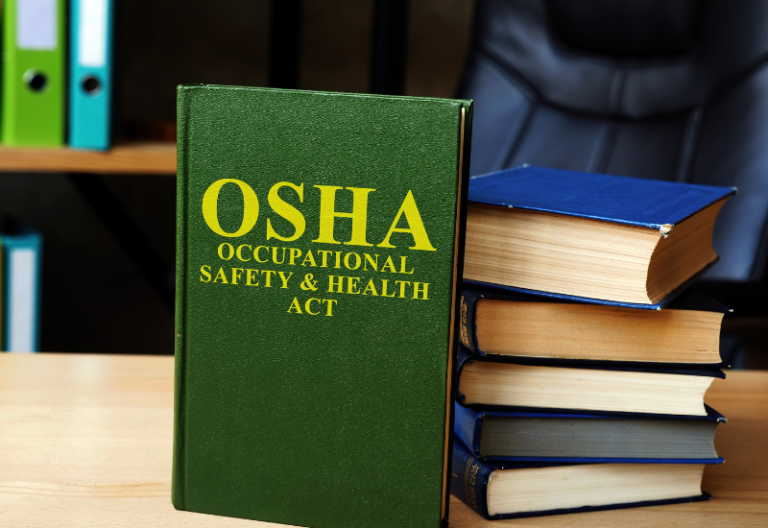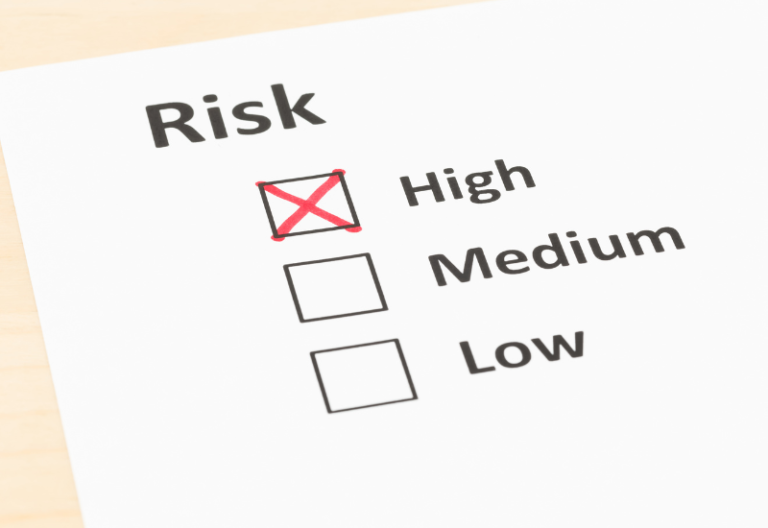Medical errors can have significant consequences for patients and healthcare providers alike. These mistakes can occur within the healthcare system, from misdiagnoses to surgical mistakes.
This article provides an overview of some of the most common types of medical errors, as discussed in the publication Medical Error and Prevention. Knowing the risks of medical errors should encourage a proactive approach to reducing these avoidable incidents and ensuring patient safety.

11 Common Types of Medical Errors: Risks and Steps for Prevention
1. Surgical errors
Surgical errors are a cause of concern, with thousands of incidents occurring annually. Examples include operating on the wrong body part or accidental hemorrhage during robotic surgery. Factors contributing to surgical errors include lack of surgeon training, communication gaps, digital distractions, absence of standardized procedures, unreliable protocols, time pressure, and other human factors. Preventive measures such as adequate staffing, good communication, complete preoperative assessments, checklists, confirming patient identity, and adopting careful protocols can help reduce these errors.
2. General diagnostic errors
Diagnostic errors are alarmingly common and can lead to adverse outcomes. Primary care solo practice is particularly susceptible to these errors since they are often overworked or cannot quickly consult with colleagues. Common diagnostic mistakes include failure to order appropriate tests, faulty interpretation, and lack of follow-up. Delays in treatment after making a diagnosis are also concerning.
Certain conditions, such as cardiac, pulmonary embolism, cancer, and neurologic diagnoses, pose specific challenges and require diligent attention. Early detection and confirmation of diagnoses are essential for preventing such errors. In these “high-risk” diagnoses, healthcare professionals should take extra precautions. Consider the detailed history of the patient, physical exam results, early imaging, and the recommendation of a specialist.

3. Medication errors
Medication errors are preventable mistakes that occur at various stages, from prescribing to administration. Examples include overriding medication-use safeguards and wrong labeling. Utilizing checklists, barcode administration, pharmacist involvement, and double-checking doses are effective preventive measures to reduce medication errors.
4. Tubing misconnection
Errors related to tube and catheter connections are more common than one might expect and can have life-threatening consequences. Connecting tubes to incorrect ports or using catheters for unintended purposes are potential pitfalls.
Preventive measures involve:
- Educating healthcare staff
- Labeling high-risk catheters
- Tracing lines back to their origins before connecting and disconnecting devices or beginning an infusion
- Using non-Luer lock connections, including NR-Fit connectors and EnFit connectors
5. Device and equipment errors
Device-related errors are often a result of poor maintenance, lack of standardization, design issues, mishandling, user errors, malfunctions, and inadequate testing. These problems can lead to life-threatening situations. To prevent device and equipment errors, human factors in device design. Prioritize standardizing and carefully selecting equipment, regular maintenance, and risk assessment to help minimize these errors.
6. Healthcare-related infections
Healthcare-associated infections are system failures that can lead to complications and increased costs. Poor hand hygiene, inadequate technique during catheter placement, and lack of infection control protocols contribute to healthcare-related infections. Adhering to proper infection control measures, implementing hand hygiene protocols (e.g., practicing proper handwashing, avoiding artificial nails, and changing gloves for each patient), and following best practices are essential for prevention.
7. Falls
Falls are a significant concern, particularly among the elderly population. Since intrinsic factors like vision problems and gait abnormalities are unavoidable, healthcare institutions can prevent the risk of falls by conducting fall risk assessments.
Identifying high-risk patients, providing safety companions, and implementing safety measures like bed alarms, raising bed rails, and frequent rounds can drastically help minimize the risk of falls.

8. Information technology errors
Electronic Health Records (EHR), Electronic Medical Records (EMR), and electronic prescribing and medication administration (ePMA) systems introduce their own set of challenges. Errors can occur during data entry, charting, or medication monitoring and reporting, potentially compromising patient safety. Implementing regulatory design standards, training healthcare providers, and utilizing preventive measures like automated dispensing devices and barcoding can reduce these errors.
9. Communication errors
Verbal and written communication errors are common sources of medical mistakes. Disruptive behavior, noise, cultural differences, hierarchy issues, lack of teamwork, and language barriers all contribute to communication breakdowns. Promoting a respectful workplace, conducting joint education programs, requiring printed prescriptions, and encouraging patients to ask about medical procedures, tests, and medications will help address these errors.
10. Errors in patient hand-offs
Transitions of care, known as patient hand-offs, are critical moments prone to errors. Incomplete information or missed follow-up can lead to adverse events. Implementing hand-off tools in electronic health records, using mnemonic techniques like I-PASS and SBAR, and performing thorough evaluations before discharging patients can improve the safety of care transitions.
11. Errors during acute interventions
Emergency situations require rapid decision-making, increasing the risk of errors. Implementing rapid response teams, addressing end-of-life plans, and providing team training can help mitigate errors during acute interventions.
Preventing Medical Errors for Patient Safety
Medical errors pose significant risks to patient safety and can have severe or life-threatening consequences. By knowing how to prevent medical errors, healthcare providers can significantly improve patient care, leading to improved treatment outcomes.
Healthcare organizations and professionals must prioritize patient safety, engage in continuous quality improvement, and foster a collaborative work environment. While requiring significant education and investment, the prevention of medical errors is possible to ensure the delivery of high-quality care.







